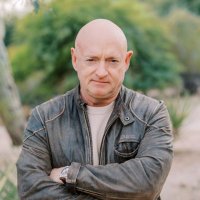
Lee Billings
@leebillings
Senior editor at @sciam. Author of Five Billion Years of Solitude, re: the search for Earth-like exoplanets. Opinions my own. Signal: @lee_billings.81
ID: 38245723
06-05-2009 18:41:33
23,23K Tweet
8,8K Followers
3,3K Following




Now on Scientific American: Scientists superheated gold to almost 19,000 °C, and astonishingly the gold didn't melt. The discovery seems to upend longstanding predictions of thermodynamics, defying what's known as the "entropy catastrophe." By Clara Moskowitz. scientificamerican.com/article/physic…

Now on Scientific American, by Dr. Nadia Drake: The U.S. just axed CMB-S4, its boldest cosmology experiment in generations. Meant to confirm cosmic inflation, instead the project was doomed by tight budgets and crumbling infrastructure. What comes next? Read our story! scientificamerican.com/article/u-s-en…

Now on Scientific American, from our columnist Phil Plait: The sky is falling—from another star. There's no "Chicken Little" nonsense here, though—this is legit: Some fraction of the meteors that streak thru Earth's skies are from beyond the solar system! scientificamerican.com/article/inters…



Now on Scientific American: NASA’s new plan for a nuclear reactor on the Moon could be a lunar land grab. scientificamerican.com/article/nasa-b…

Now on Scientific American: Has JWST spied ancient light from primordial black holes? By Conor Feehly. scientificamerican.com/article/the-ja…



Now on Scientific American: Brutal budget cuts for NASA could halt space missions, hinder climate research, and cede U.S. sci-tech leadership to other nations. At least, that's what John Grunsfeld John Grunsfeld—and every other living former NASA science chief—says. scientificamerican.com/podcast/episod…

Now on Scientific American: While the Trump administration is ordering NASA to build a lunar nuclear reactor by 2030, it's also proposing $ cuts that'd end the space agency's nuclear-powered exploration of the solar system. Will Congress push back? By Hannah Richter. scientificamerican.com/article/trump-…

En route to the intriguing metallic asteroid Psyche, the Mission To Psyche spacecraft looked back toward Earth... ...and got this view of our planet and its Moon as two tiny lights floating in the great depths of space. jpl.nasa.gov/news/nasas-psy…


Now on Scientific American: Carbon dioxide may be the most important—and most misunderstood—molecule on Earth. Peter🌲Brannen explains why in his brilliant, epic new book—and in this conversation with me. I hope you read both! scientificamerican.com/article/carbon…

Now on Scientific American: “Kaboom” is not the sound you want a rocket ship to make, as a rule. Yet that’s the problem facing SpaceX’s Starship. Instead of going to space, it keeps going kaboom. Will this Sunday’s test flight be different? Stay tuned. By Adam Rogers. scientificamerican.com/article/why-do…

“Anyone who tells you they know what 4° C of warming or more in a century will actually mean—or what that will look like on a planet gripped by ice ages for the past 3 million years—is full of shit. Especially if they’re an economist.” Wise words from Peter🌲Brannen’s great book

